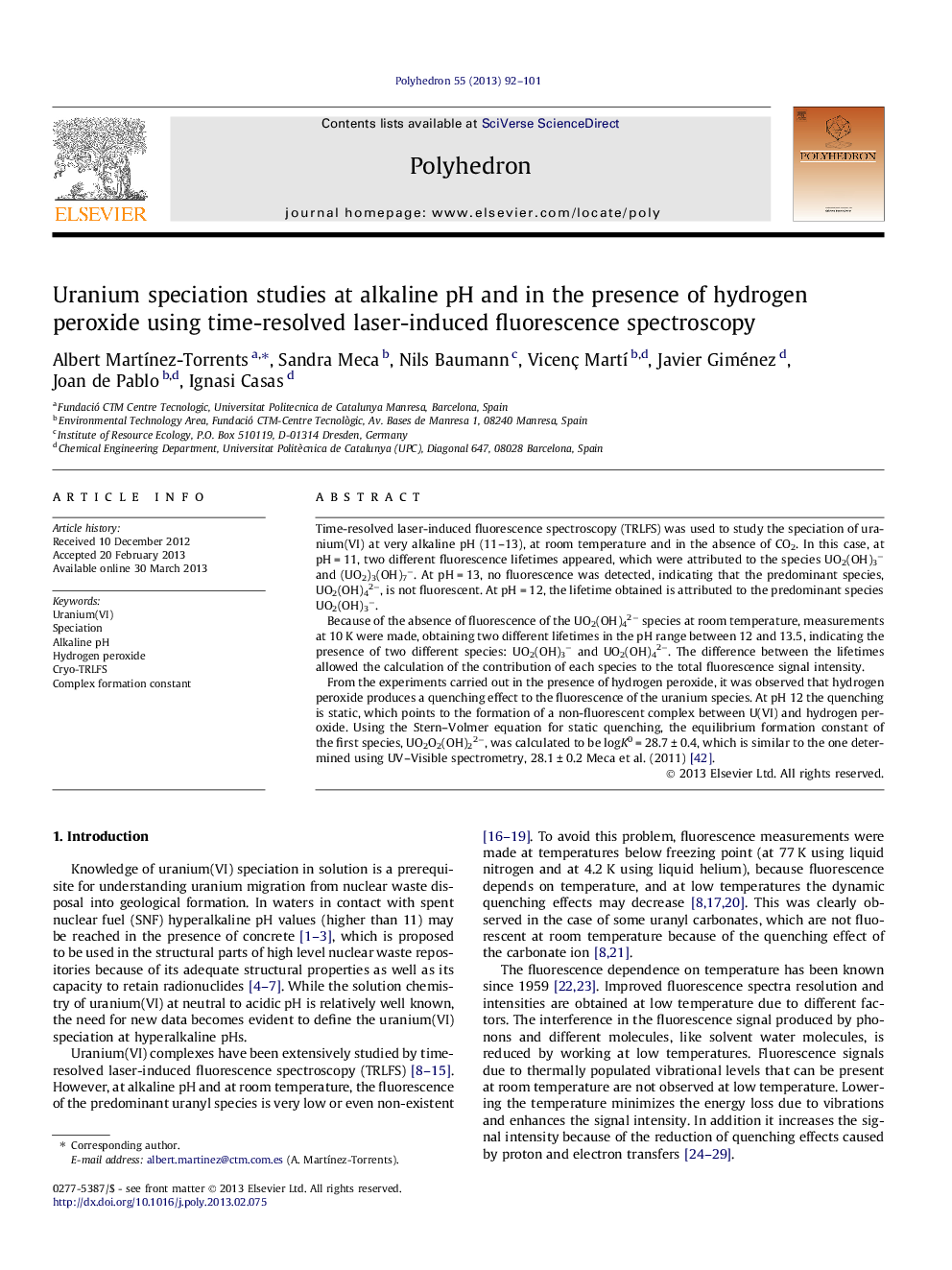| کد مقاله | کد نشریه | سال انتشار | مقاله انگلیسی | نسخه تمام متن |
|---|---|---|---|---|
| 1338427 | 1500284 | 2013 | 10 صفحه PDF | دانلود رایگان |

Time-resolved laser-induced fluorescence spectroscopy (TRLFS) was used to study the speciation of uranium(VI) at very alkaline pH (11–13), at room temperature and in the absence of CO2. In this case, at pH = 11, two different fluorescence lifetimes appeared, which were attributed to the species UO2(OH)3− and (UO2)3(OH)7−. At pH = 13, no fluorescence was detected, indicating that the predominant species, UO2(OH)42−, is not fluorescent. At pH = 12, the lifetime obtained is attributed to the predominant species UO2(OH)3−.Because of the absence of fluorescence of the UO2(OH)42− species at room temperature, measurements at 10 K were made, obtaining two different lifetimes in the pH range between 12 and 13.5, indicating the presence of two different species: UO2(OH)3− and UO2(OH)42−. The difference between the lifetimes allowed the calculation of the contribution of each species to the total fluorescence signal intensity.From the experiments carried out in the presence of hydrogen peroxide, it was observed that hydrogen peroxide produces a quenching effect to the fluorescence of the uranium species. At pH 12 the quenching is static, which points to the formation of a non-fluorescent complex between U(VI) and hydrogen peroxide. Using the Stern–Volmer equation for static quenching, the equilibrium formation constant of the first species, UO2O2(OH)22−, was calculated to be logK0 = 28.7 ± 0.4, which is similar to the one determined using UV–Visible spectrometry, 28.1 ± 0.2 Meca et al. (2011) [42].
Time-Resolved Laser-Induced Fluorescence Spectroscopy (TRLFS) was used to study the speciation of uranium (VI) at very alkaline pH (11–13), in absence of CO2, at room temperature and at 10 K. The lifetime of species UO2(OH)3- , UO2(OH)42- and (UO2)3(OH)7- was obtained. From the experiments carried out in the presence of hydrogen peroxide, it was observed that hydrogen peroxide produces a quenching effect to the fluorescence of the uranium species. At pH 12 the quenching is static, which points to the formation of a non-fluorescent complex between U(VI) and hydrogen peroxide. Using the Stern-Volmer equation for static quenching the equilibrium formation constant of the first species UO2O2(OH)22-, was calculated to be: logK0 = 28.7 ± 0.4.Figure optionsDownload as PowerPoint slide
Journal: Polyhedron - Volume 55, 17 May 2013, Pages 92–101